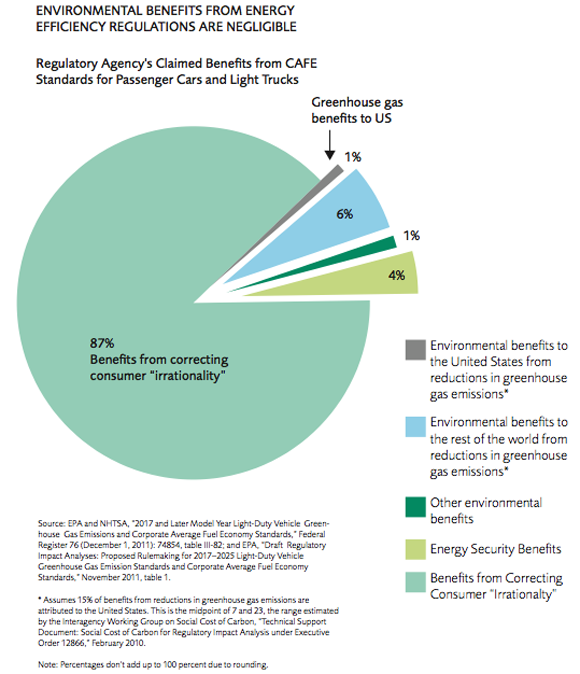Michael Giberson
One of the federal government’s first oil conservation ideas, initiated during the Ford presidency, was Corporate Average Fuel Economy (CAFE) regulation. Mostly the goal was to reduce U.S. consumption of oil as a way to reduce oil imports, though ancillary environmental benefits were also anticipated. Regulatory analysis of CAFE regulations over the near 40-year history of the regulation has come to mixed conclusions, but it is safe to say that most consumer conservation efforts since 1975 have been driven by changing fuel prices and CAFE has been a modest factor at best.
About a year ago the Obama administration announced significant increases in the fuel efficiency standards. On December 1, 2011 the EPA and NHTSA issued the formal regulatory proposal: “2017 and Later Model Year Light-Duty Vehicle Greenhouse Gas Emissions and Corporate Average Fuel Economy Standards,” Federal Register 76 (December 1, 2011): 74,854.
What may be most interesting about this latest increase in standards is that the increase is justified by regulators only incidently by projected environmental or energy security benefits. Most of the government-projected benefits come from the government correcting mistakes it thinks consumers make when buying new cars. As an analysis by Ted Gayer and Kip Viscusi shows, the EPA and NHTSA believe that less than 13 percent of the benefit of the regulation will be from environmental and energy security improvements. The other 87 percent of the benefit, according to the federal government’s analysis, comes from the government helping to correct for consumer shortsightedness.
The Mercatus Center produced this chart summarizing the official analysis:
The analysis by Gayer and Viscusi includes a look at clothes dryer and room air condition efficiency standards in addition to automobile fuel efficiency standards. In each case the purported private benefits from the regulations, that is to say the improvements to consumer well being that come from the regulator “fixing” consumers’ choices, is much higher than the calculated environmental benefits of the proposed regulations.
Gayer and Viscusi note that counting such “private benefits” from regulation represents a departure from the OMB’s usual methods for measuring regulatory costs and benefits. Perhaps it is the so-called “soft paternalism” influence of outgoing regulatory czar Cass Sunstein. (See also Chidem Kurdas at ThinkMarkets.)
See also Ken Green’s comments at the AEI blog, “Do energy efficiency regulations benefit consumers?“

We should all be very glad that regulatory czar Cass Sunstein is “outgoing”.
The CAFE program has forced the availability of high mpg vehicles. Consumers have chosen to continue buying vehicles which provide the “utility” they require of their vehicles. Perhaps consumers understand their “needs” better than the “nanny state”. Imagine that!
Apparently the “nanny state” is only pro-choice on selective issues.
Doesn’t sound very “soft” to me!